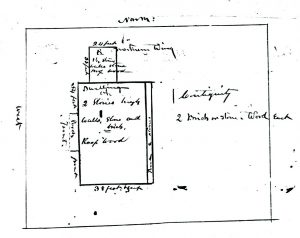First, the Clowser Foundation Memorial Service will be held tomorrow, Saturday, June 5 at the Clowser House, 152 Tomahawk Trail. The event is free and open to the public. If it’s been a while since you’ve been into Shawneeland, there are numerous improvements to the house and grounds to see and many friendly Clowser family descendants to meet. The event starts at 10 AM.
Second, if you are looking to travel a bit farther afield for some history tourism, Leesburg will be holding their first ever Juneteenth celebration on Saturday, June 19th beginning at 11:00 AM with a car caravan from Belmont Country Club to Claude Moore Park. Activities begin at noon at Claude Moore Park with the traditional flag raising ceremony by the legendary Buffalo Soldiers, followed by musical performances, kids activities, and mini-Juneteenth classes. Learn more at The Patch.
Are you invested in the future of saving places? The National Trust for Historic Places is developing a National Impact Agenda to help collaboratively guide the future of historic preservation and make it a more inclusive movement. Learn more and take the survey at their website to chime in why old places matter to you and what actions should be prioritized over the next 3-5 years!
In our work sorting through the Mutual Assurance Fire Policies, we noticed a number of buildings we have documentation for are no longer standing. Some are known to us through other means like photographs, town maps, drawings, or recollections like William Greenway Russell or T. K. Cartmell. Some others, however, seem to have slipped through with very little documentation. During some unrelated research, we found a news article on the demise of Jacob Baker’s home on Kent Street. The name was familiar from the recent Mutual Assurance Society policy database work we undertook this spring, and we can now bring a long-ago Vanished Winchester story to you.
The first trail on this building through the Mutual Assurance Society comes from Henry St. George Tucker insuring his building on “a square of lots East of Kent Street, West of East Lane” in 1827. According to a footnote in Russell’s What I Know About Winchester, Jacob Baker purchased the property in 1832. Although the footnote would lead one to assume the building was destroyed by fire before Baker’s purchase, it was perhaps a bit of careless reading of Russell’s recollections without deeper follow-up. While the house was indeed destroyed by fire at the time of Russell’s writing, the implied timing does not match the primary sources. In 1845, the Mutual Assurance policy had transferred to Jacob Baker, who was using the building as his personal dwelling.
While the Mutual Assurance Policy sketches are suggestive at best, it appears the house was situated roughly mid-block between the bounding streets of Kent, Piccadilly, Philpot, and East Lane (about the location of the Lewis-Jones Knitting Mill, but set back some distance from Kent Street). A one and a half story stone wing 24’x33′ with a wood roof was to the north (toward Piccadilly St.). The main house was two stories high, 38’x54′, and made of brick and stone with a wood roof. The main entrance was facing Kent Street with a porch around the central entrance. On the eastern (rear) side of the house was a full-width two story porch facing East Lane.
The house remained standing until March, 1866. At about 7:30 AM on March 8, the roof of wood shingles was noticed to be on fire. While it had not progressed far at that point and assistance was sent for, high winds and the dry shingles fed the flames, and the Union fire engine could not help, as its hose could not reach the fire hydrants. Amazingly, soldiers and citizens helped remove most of the furniture from the house so that not everything in the house was lost. Read the full article in the Winchester Journal through Handley’s online newspaper archive. A second account of the fire also ran in the Winchester Times, which survives as a reprint in a Richmond newspaper, below:
Fire in Winchester.—On Thursday morning last, says the Winchester Times of the 14th, the elegant mansion of Jacob Baker, Esq., on Kent street, took fire, and all efforts to extinguish the flames were unavailing, and in a short time this noble old structure together with the out buildings presented a mass of smouldering blackened ruins. At one time fire was communicated to the long dry grass in Mount Hebron Cemetery, and it was feared the wooden head-boards to the graves of hundreds of Confederate dead would be burned, and thereby obliterate every trace of the departed loved ones, but through the almost superhuman efforts of the citizens and soldiers, this most dreadful calamity was spared us. We understand Mr. Baker is insured in the Mutual Fire Insurance Company of Richmond for the amount of $5,000, which is perhaps one-third his loss. (Richmond Whig, Volume 75, Number 66, 19 March 1866)

